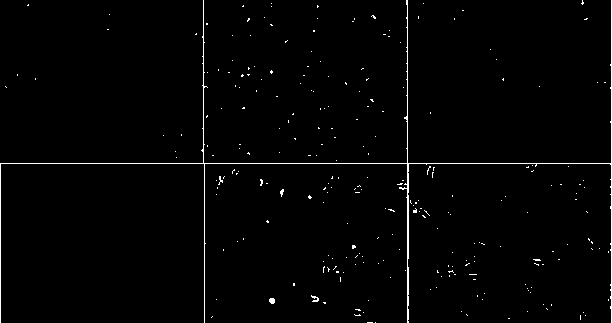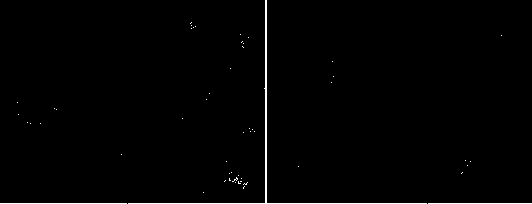Improved fat stem cell for epidermis damage repair
A technology of adipose stem cells and human adipose stem cells, which is applied in the field of cell and genetic engineering and epidermal damage repair, can solve the problems of burn patients such as lack of sufficient autologous skin, immune rejection, poor treatment effect, etc. Effect of cultivation, rapid growth
- Summary
- Abstract
- Description
- Claims
- Application Information
AI Technical Summary
Problems solved by technology
Method used
Image
Examples
Embodiment 1
[0065] Example 1: Preparation of Improved Adipose Stem Cells for Epidermal Damage Repair
[0066] 1. Isolation and in vitro culture identification of human adipose stem cells:
[0067] Isolation and culture of human adipose stem cells: adipose tissue was cut into mince, washed several times with PBS, digested with 0.1% collagenase I on a shaker at 37°C, centrifuged for 30 min to remove the supernatant, and the pellet was resuspended in 10% fetal bovine serum In the DMEM culture medium, transfer it into a culture dish; replace the culture medium every other day; after reaching the logarithmic growth phase, digest with 0.25% trypsin, and pass passage at a ratio of 1:3. For the results, see the attached figure 1 .
[0068] Detection of growth curve: Take cells in logarithmic growth phase, digest with trypsin, wash and centrifuge, prepare single cell suspension, and inoculate into 24-well plate. Randomly pick cells from 4 wells every day to digest, count, take the average val...
Embodiment 2
[0126] Example 2: The method for promoting the differentiation of human adipose stem cells to the epidermis
[0127] 1. Isolation, culture and identification of human adipose stem cells.
[0128] 1.1. Cut the adipose tissue into 0.3cm×0.3cm×0.3cm size, rinse with 0.1mmol / L phosphate buffered saline (PBS), transfer it to a bottle, digest with 0.1% collagenase I, cut it into paste repeatedly Set it on a shaker at 37°C, centrifuge at 1000 r / min for 30 min to remove the supernatant, resuspend the pellet in 0.075 mmol / L potassium chloride, let it stand for 10 min, then centrifuge to remove the supernatant, and resuspend the pellet in 10% fetal bovine serum DMEM culture medium, transfer to a Petri dish; replace the culture medium every other day. After reaching the logarithmic growth phase, it was digested with 0.25% trypsin at 37°C, and passaged at a ratio of 1:3. See the attached figure 1 .
[0129] 1.2. Draw the cell growth curve, see the attached Figure 4 , flow cytometr...
Embodiment 3
[0185] Embodiment three: Q-PCR detection test
[0186] 1. RNA extraction.
[0187] 1.1. Aspirate the culture medium, add 1 mL Trizol, keep at room temperature for 5 minutes, pipette the cells repeatedly, and transfer the cell lysate into a 1.5 mL EP tube.
[0188] 1.2. Shake vigorously for 15 seconds, add 0.2 times the volume of chloroform, shake for 15 seconds, and place at room temperature for 2 to 3 minutes.
[0189] 1.3. Centrifuge at 12000 rpm for 10 minutes.
[0190] 1.4. Aspirate the upper aqueous phase, transfer it to another new EP tube, add 1.1 times the volume of isopropanol, mix well, and place at room temperature for 10 minutes.
[0191] 1.5.12000 rpm, centrifuge for 10 minutes, discard the supernatant.
[0192] 1.6. Add 1 mL of absolute ethanol to wash the RNA pellet.
[0193] 1.7. Centrifuge at 7500 rpm for 5 minutes and discard the supernatant.
[0194] 1.8. Fully absorb the residual ethanol solution, let it dry for 2~3 minutes, and add 20 uL DEPC-treate...
PUM
 Login to View More
Login to View More Abstract
Description
Claims
Application Information
 Login to View More
Login to View More - R&D
- Intellectual Property
- Life Sciences
- Materials
- Tech Scout
- Unparalleled Data Quality
- Higher Quality Content
- 60% Fewer Hallucinations
Browse by: Latest US Patents, China's latest patents, Technical Efficacy Thesaurus, Application Domain, Technology Topic, Popular Technical Reports.
© 2025 PatSnap. All rights reserved.Legal|Privacy policy|Modern Slavery Act Transparency Statement|Sitemap|About US| Contact US: help@patsnap.com



